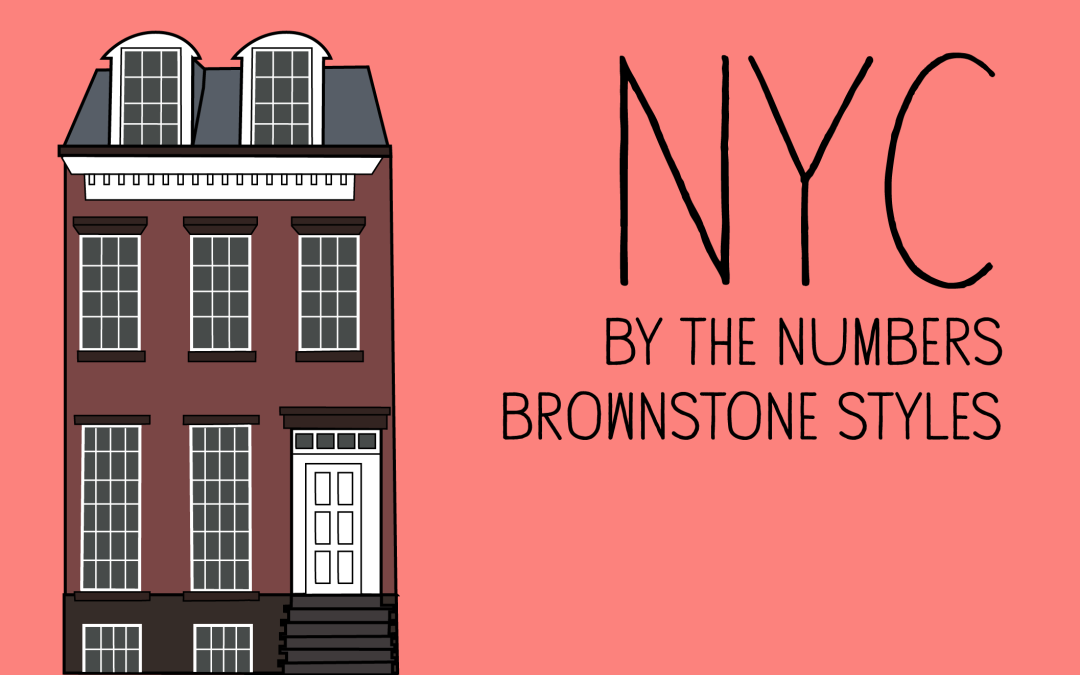
One of the aspects of NYC that makes it so unique is the block and block of beautiful brownstones, lining the streets. However, there’s not on cookie cutter style for them, and anyone who has walked around the city has probably realized this. The variety of styles that one might see around New York City fall into eight categories depicted above and described below.
FEDERAL
The oldest style of brownstone in New York City, the Federal style brownstone was built in the early 1800s and have simple architectural details. Generally they are two or three stories with a basement and a half attic that has dormer windows.
GREEK REVIVAL
Built between 1830 and 1850, Greek revival row house are inspired by classical Greek architecture. They are generally three to three and half stories, and are slightly bolder than Federal style brownstones.
ITALIANATE
The most prominent style of brownstone in New York City, the Italianate style was built from the mid to late 1800’s. Usually between two to four stories high, Italianate brownstones are characterized by their feminine ornamentation, organic forms, and symmetry.
GOTHIC REVIVAL
Influenced by Medieval Architecture, Gothic Revival brownstones were built around 1840 to 1860. Although similar in style to Greek Revival and Italianate in shape, Gothic Revival is distinct by it’s pointed arched doorways and more ornate stonework.
NEO-GREC
A more masculine versions of the Italianate brownstone, the Neo-Grec style gained popularity around 1865. What makes the Neo-Grec style unique is it’s carved detailing sometime applied directly to the surface of the building.
SECOND EMPIRE
Also gaining popularity in the 1860’s, the Second Empire is also quite similar in style to Italianate style. However, Second Empire style brownstones generally have ornate curved windows and a slate roof.
QUEEN ANNE
The most ornate of all the styles, Queen Anne style brownstones were constructed between 1870 and 1890. Probably, the most noticeably different of all the styles, Queen Anne brownstones have lots of asymmetrical eclectic details with a variety of textures, colors, and materials as well as gabled roofs with dormer windows.
RENAISSANCE REVIVAL
Focused on elegant classical styles, the Renaissance Revival brownstones started popping up in NYC between 1880 and 1920. Featuring light color bricks, the brownstones generally have flower, wreath, or fruit motifs around the windows.
ROMANESQUE REVIVAL
Another style that stands out against the rest, Romanesque Revival style brownstones were built between 1880 and 1890. Buildings in this style us a mix of materials and have an asymmetrical design that has Byzantine-style and Spanish-style influences.



